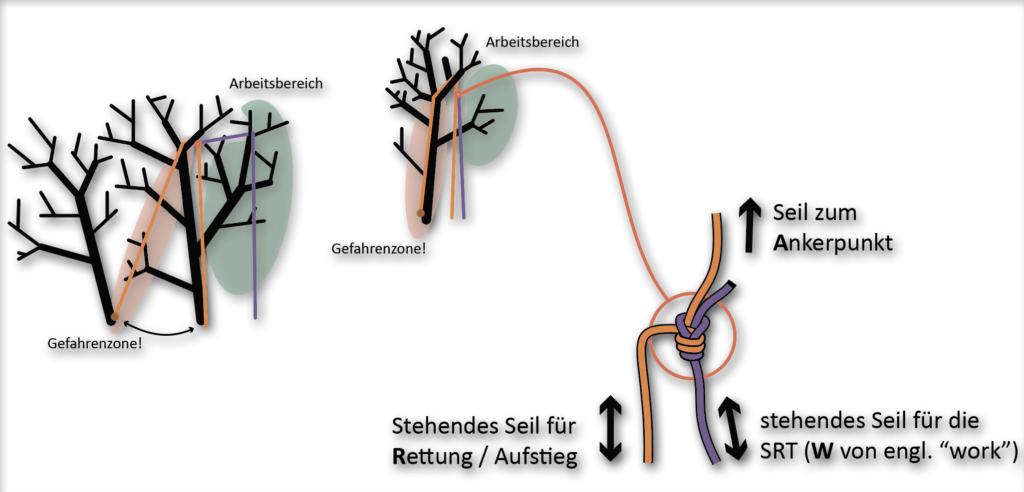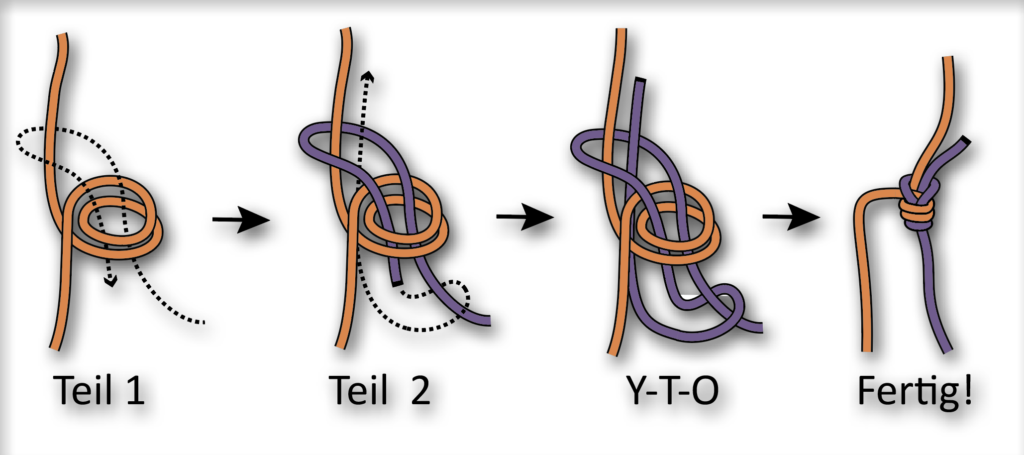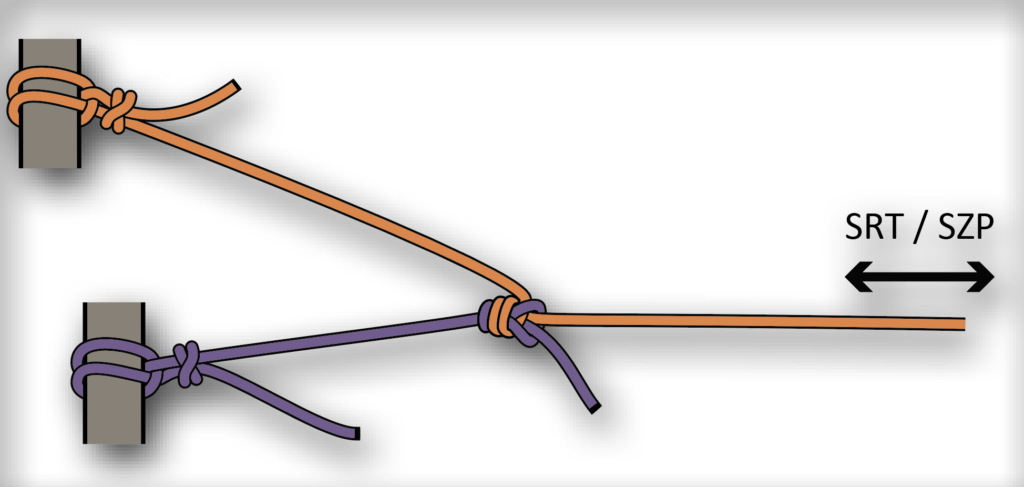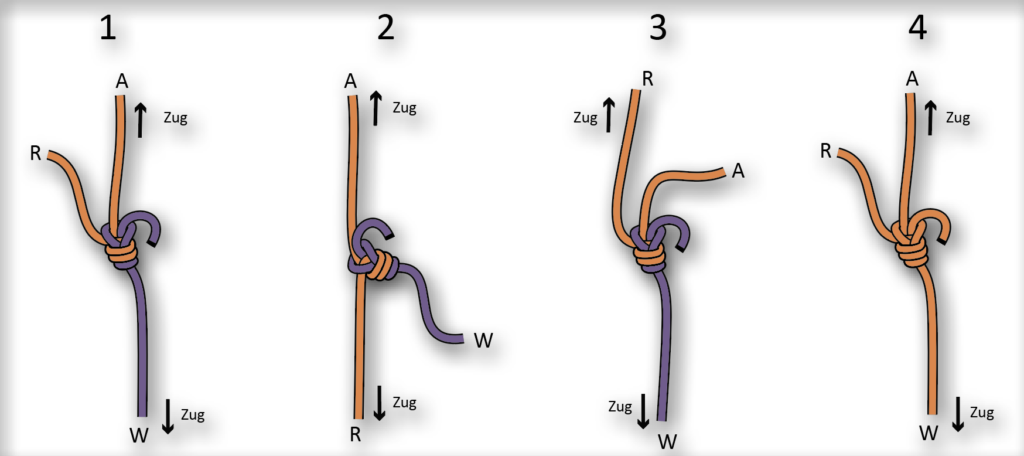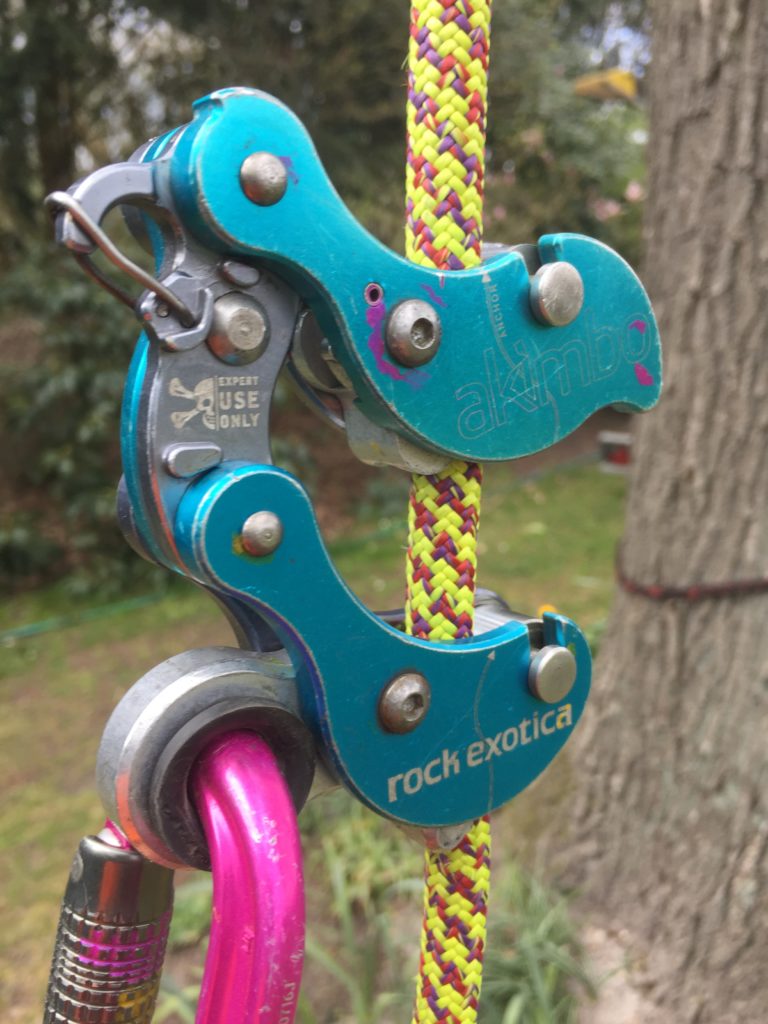ARE YOU HOOKED??!!
Our learning process should be flexible and we should keep an open mind for new ideas and make new (own) experiences. We are all unique human beings: We need to explore by our self, what kind of technique offers a benefit to our climbing style or provides an advantage to ergonomics during our – quite special – working day.
No matter what kind of technique or new invention we get in touch with: Everything has its ups and downs. There is no such thing as a “universal top notch” in treeclimbing. I will always promote to keep up awareness that each one of us has a unique climbing style with specific needs. No technique suits to everybody. It is important to listen to others experiences and learn from them, but we should never accept the opinions of others without questioning.
Throwing hooks are highly debated objects. In the beginning I was a little distanced to these tools by these discussions or the bragging promotions about hooks. And since I like a less polarizing but more grounded conversation I tied to collect reasonable info about throwing hooks to give you a moderate overview and a solid theoretical base to gain your own experiences. Feel welcome to discuss and question this with your friends and colleagues – and with me – if you like 🙂 !
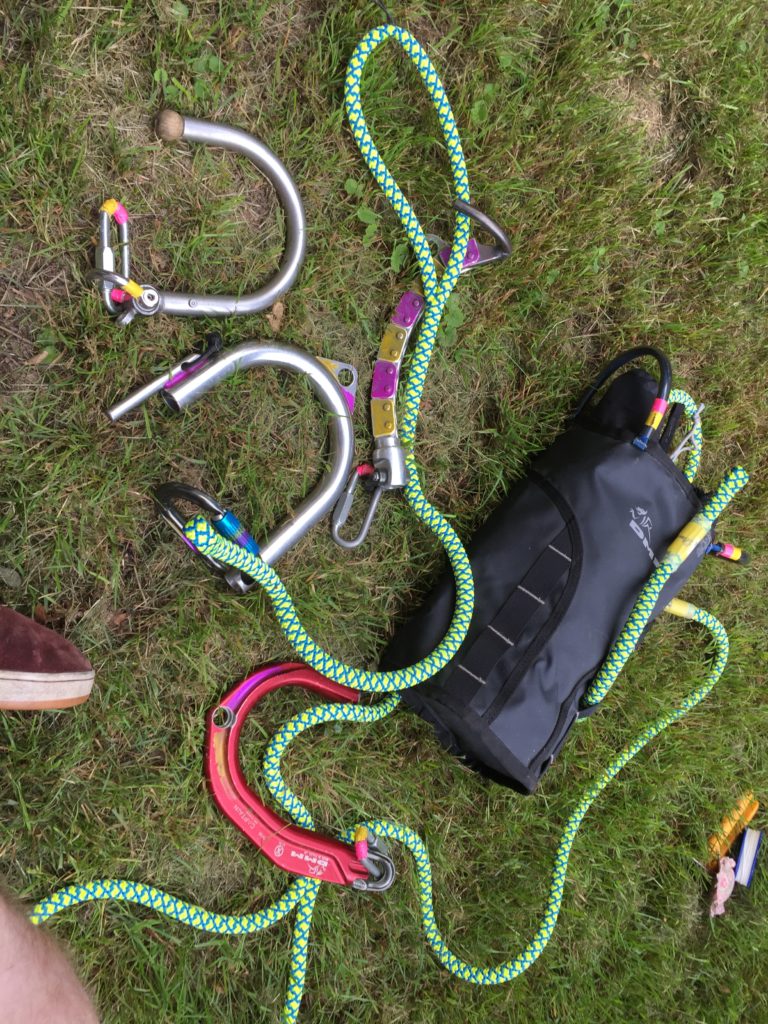
If you are already a happy hook-user or if you are still unsure about the utility of a hook: I want to talk about a few advantages and disadvantages, different applications and some ideas for your personal risk-assessment.
First of all:
What is a throwing hook actually good for?
> Different applications
The combination of a hook and a rope with sufficient load-bearing capacity is a powerful tool. A well-placed throwing hook can provide many functions in rope climbing. In addition, it also acts as an extended arm or even as a replacement for a pole saw. It is an enormous extension of the „tool-box“ in everyday climbing and I can no longer imagine my work routine without it:
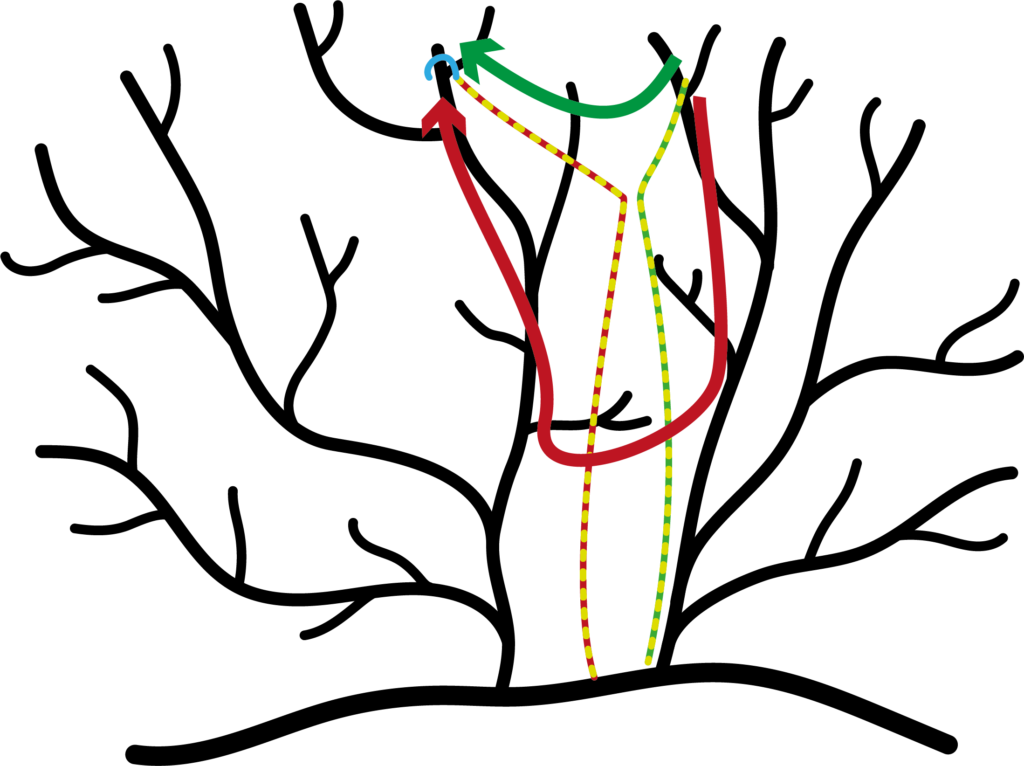
Traverse:
Whether between two trunks or between trees, the climbing path between the two anchor points is often connected with double work: entering two times from the ground or long climbing stretches and strenious alternating ascents With a throwing hook, a rope can be brought into the target tree / trunk and reached directly, for example using methods from the single rope technique (SRT)

The third hand:
In the outer branch area everything is often wobbly or the way out is very difficult due to the lack of support and / or a flat rope angle. A throwing hook, thrown into a parallel, slightly higher branch or into the outer branch area, could provide additional support for difficult climbing movements. The hook can also be used on one end of the lanyard.
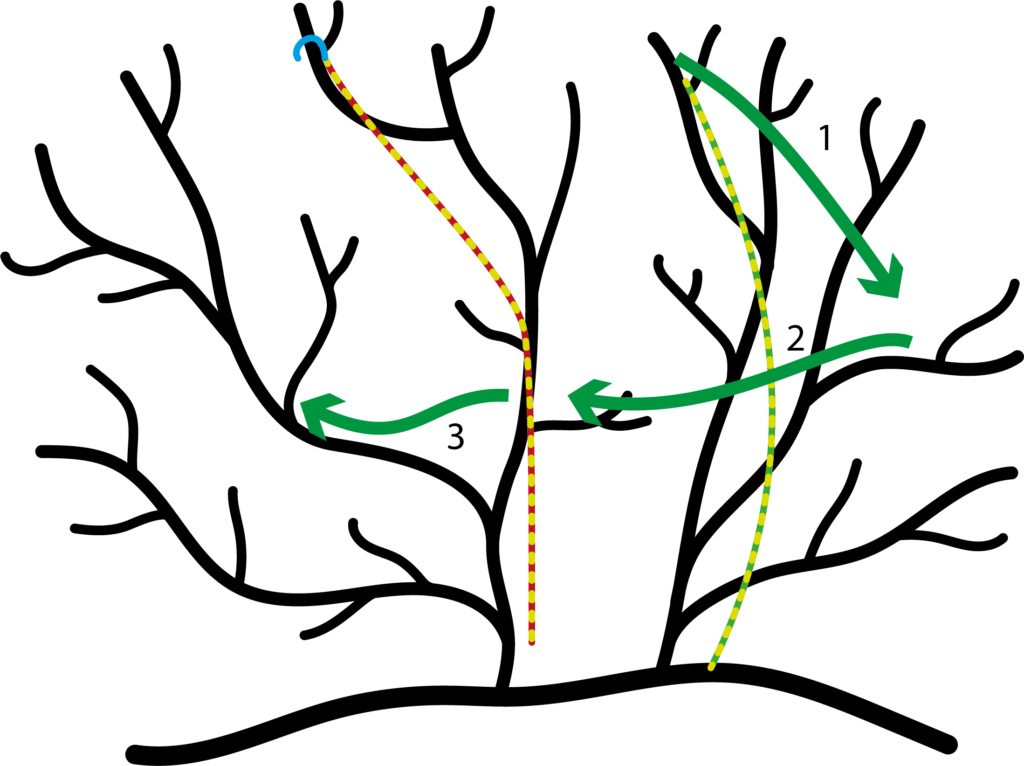
The additional system:
During installation or during the work process, throwing hooks connected to a long, independent rope can be placed in the tree waiting there for its use. Whether as a planned transition or additional positioning: They are a valuable addition to complex route planning in the tree.
For the sake of completeness, I would like to mention the rear traverse:
All climbing techniques in one direction also work backwards, i.e. away from the hook. Here, removing the hook from a distance is often a tricky exercise that not everyone likes to incorporate into their flow. But it works.
The pole saw replacement:
Many dead branches that we have to remove are easy to be broken away. If they are out of reach and can only be reached with considerable effort, the pole saw is often a practical solution. In their place I always try to remove such branches with the hook first. Most of the time it works well and saves me both time and a lot of struggling with the pole.
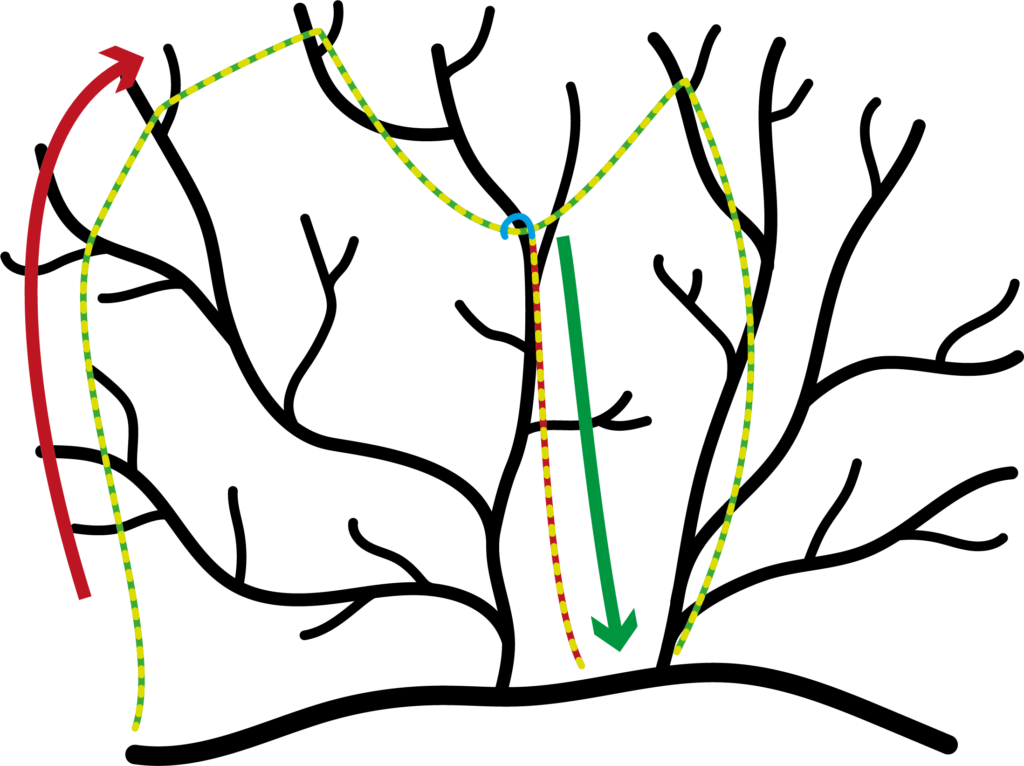
The SRT “deviation extension” aka pull-back variant:
If you climb SRT, the hook unfolds another ability for you: The extension of natural deviations from below or even from the ground. Regardless of whether the deviation should be removed while climbing or just because it causes too much friction while removing the rope so the process is stopped:
Use a throw line or rope to throw the hook over the horizontal rope section (between anchor point and deviation) and pull the hook down in a bay. Then pull the end of the rope until the rope is hanging straight down. This technique can save a lot of climbing work!
The throwing weight:
While throwing ropes or lanyards, there is often a little weight missing. A hook can be attached to anything in order to throw more precisely or to guarantee that the rope slips down through the fork.
There are certainly a lot more possibilities this device is good for. Getting seven options with one device alone are seven good reasons to keep a hook on your harness almost always.
And what’s the catch?
> Application hazards
As always in life and especially in treework: we should always do a risk assessment. “Is it save to do what I’m doing?” Is a question that we cannot ask ourselves often enough. The throwing hook has a few pitfalls when it is transported and used (both as a throwing weight and as an auxiliary anchor point), which we must always be aware of. If we keep this in mind it can safely develop its potential.
In general: a hook is never the only belay point in the tree! If the rope angle of the climbing system becomes too flat due to climbing on the hook, a full backup has to be created with the lanyard. A hook therefore only serves as a support system to improve safety and ergonomics. Similar to the selection of anchor points for installation in the tree, we must never act too risky about that!
Transport on the belt:
If worn incorrectly on the belt, a hook tends to be catchy. Logically, because this is what it has been designed for and that is its favorite task! But this can lead to bad stumbling or even falling. Therefore, always hang the hook upside down to the harness, close the hook opening (if possible) or pack it in a separate bag for transport.

A hook weighs a lot and a falling hook doesn’t always get stuck. Keep it save on the harness and not just in a snapper: it will go wrong at some point! Apart from that, a lost hook that has not been found is also really an expensive loss (believe me, there are a few sad testimonials)!
Concerning throwing:
Take care of your body! A retracted hook can cause blue eyes, lacerations and holes in the pretty row of teeth, among other things. You know that from the carabiner at your lanyard. And a visor doesn’t protect your shoulders. Pay attention and no jerky movements! Ensure more harmony.
Secure the end of the rope! A well thrown hook is not much help if you watch the end of the rope fly away with the hook. Surprise! I don’t have to say more about it.
Not every throw is a hit. A catch in the branches cannot be ruled out. Make it clear to yourself beforehand where you are aiming and whether you can reach the point in a different way to recover your hook. Therefore also practice „unhooking“ and „turning“ the hook (by twirling the rope) in order to be able to control the hook well from a distance.
The crucial question:
Use on the independent rope or at the end of the climbing system / at the lanyard?
If you use the hook with an extra rope, you drag additional weight and possibly create more rope chaos in the tree. For this you always remain independent. The use of the hook on the end of the rope of your system or on the free end of the lanyard is quickly at hand and does not require any additional material, but a locked hook to an unsafe point can quickly turn down your day and lead to the inability to move! Make sure that self-rescue is always possible.
As an anchor point:
If you set a new anchor with a hook, you have to be sure that the selected tree / trunk is stable and unbreakable. Such controls are quickly forgotten up in the tree. Without this check, any climbing action will be life-threatening!
The same applies to the selected branch fork. This should also ensure a stable, comprehensive seat of the hook (not too big and not too small). You shouldn’t force it into place either, in case you have to break free of it. If a hook does not sit properly, throw it again! Slipping out, breaking out or jumping off must be excluded under all circumstances!
The control of the hook position is also essential during the movement! Changed rope angles mean that hooks can move and slip out of stable positions! But that is predictable and can be avoided in good time. Always keep an eye on a loaded hook!
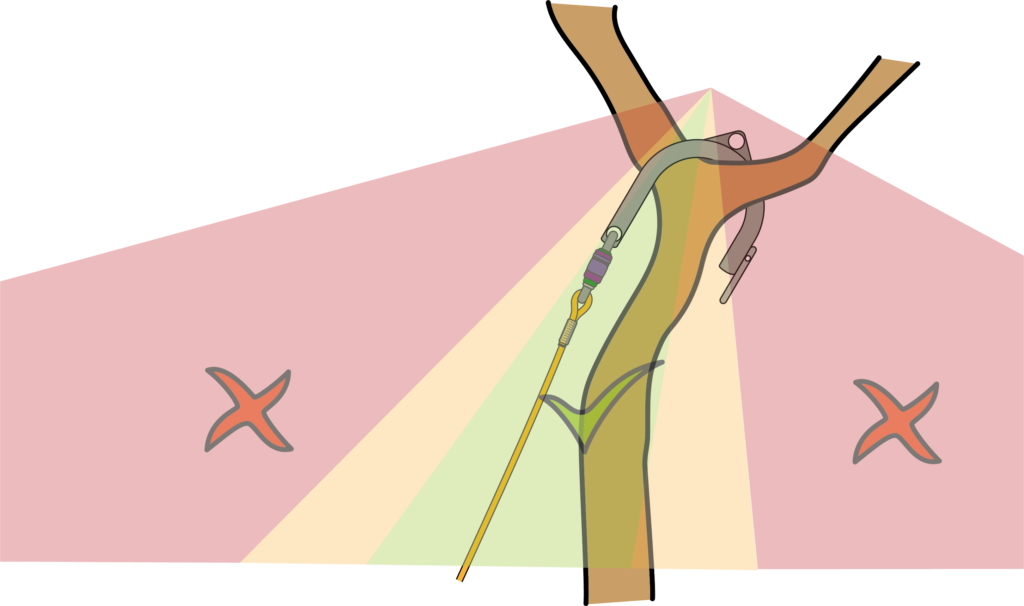
„Regular hooking“ vs. „choke“ and „inverse hook“: Additional security can also be achieved by choking (fully enclosing installation) or by inverse hooking* (see picture for explanation). Especially when stepping over in conifers (e.g. when harvesting cones), the inverse hook is often the only way to ensure a safe installation, as this prevents the hook from slipping on the slightly downward hanging side branches.
* Safety allert about the inverse hook: If you unload an inverted hooked climbing line, the hook might slip down due to its own waight and „unhook“! There has been at least one bad accident because of this. Take care!
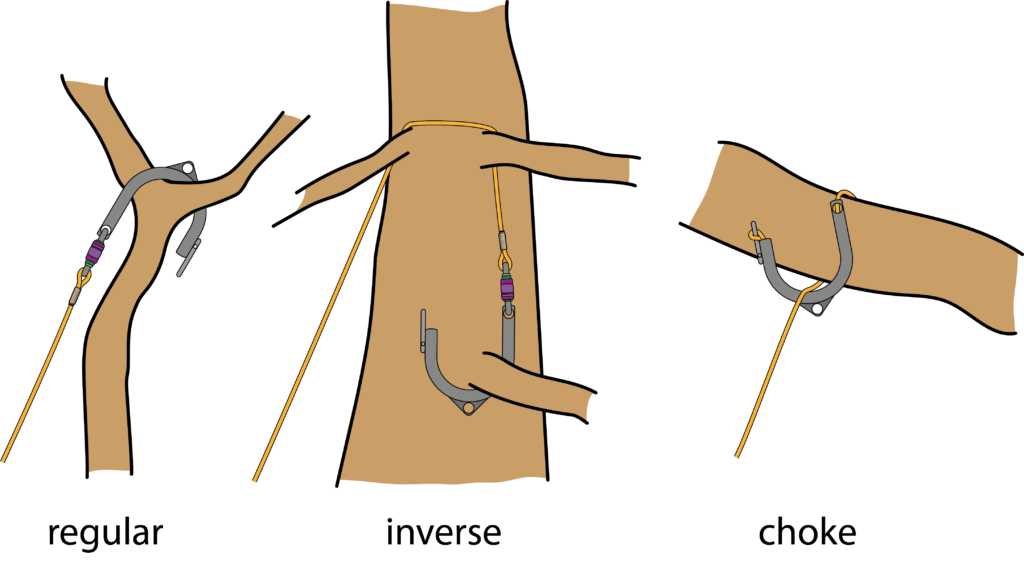
This summary for sure is incomplete. Make your own risk assessment and be prepared for other hazards not listed above!
What are the differences of available products?
> The test report is coming!
The range of throwing hooks has increased quite surprisingly in recent years. In addition to the yellow steel classic, which has disappeared from the catalogs, and the much more sophisticated version by Ronnie Epple, Tim Schröder has implemented a new idea with the Approach. ThompsonTreetools went a totally different way with the Bennett Hook. And when DMM brought Captain Hook (with the wonderful pun on words from Peter Pan) onto the market, four options specially developed for treeclimbing were available. There was still no end in sight and Christian Wolf brought two exciting variations into the game: the claw finger, a spliced hook without a bulky connection directly on the long rope or as a short version.
All currently (on arborist supply shops) available Hooks are great tools and support with a pretty good performance. To be more precise about “how good” I will publish a test report soon. Just in time for Christmas shopping I am looking forward to close my test series and give you some more info to this really interesting topic here on my Blog.

Stay safe and sound
and
see you in the trees !
Yours
Muck


